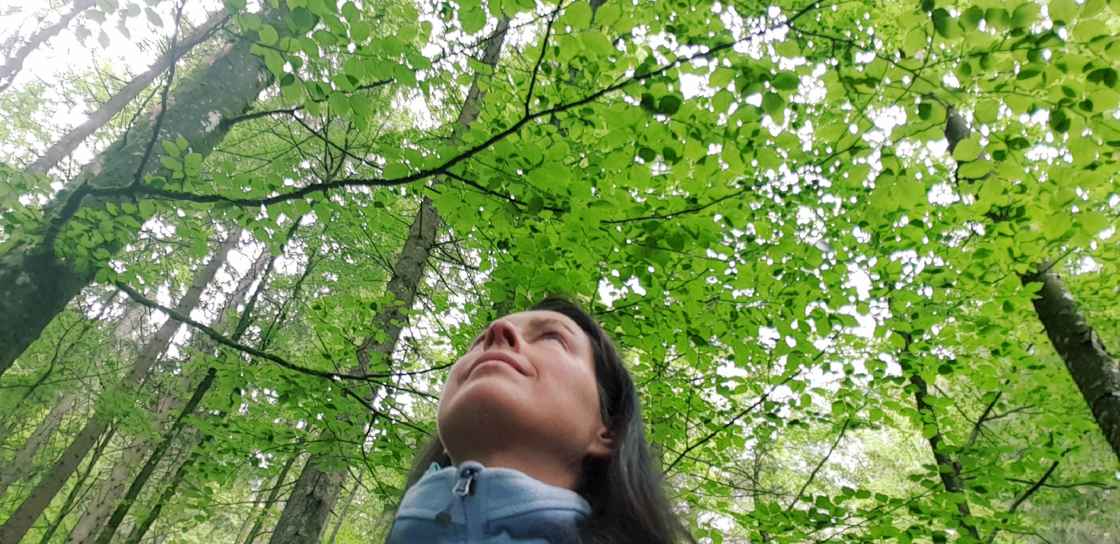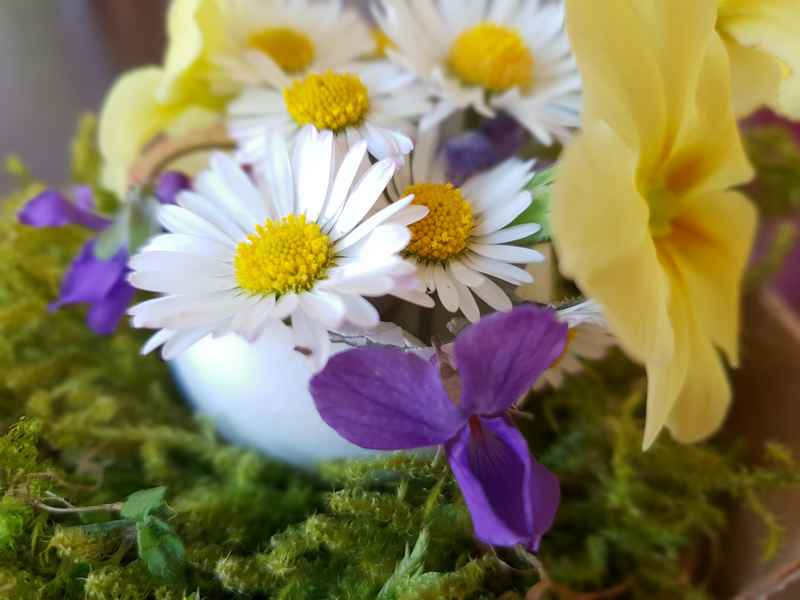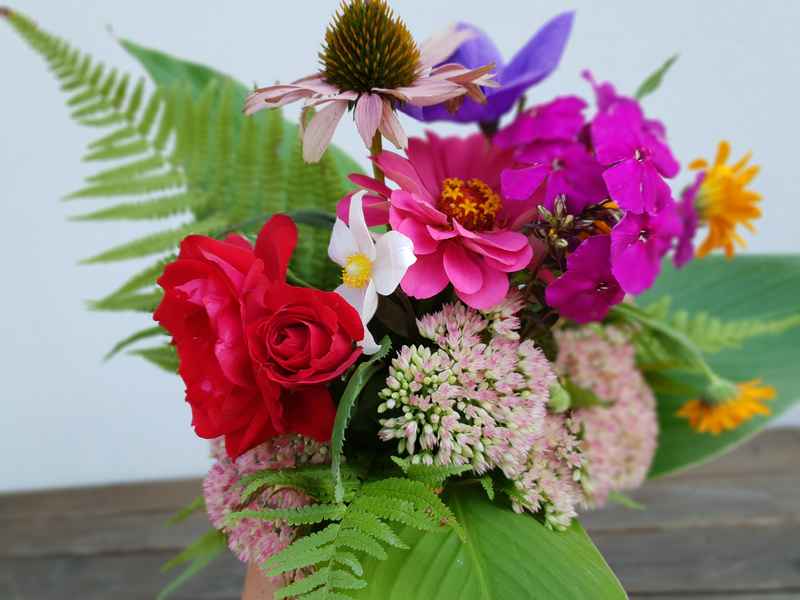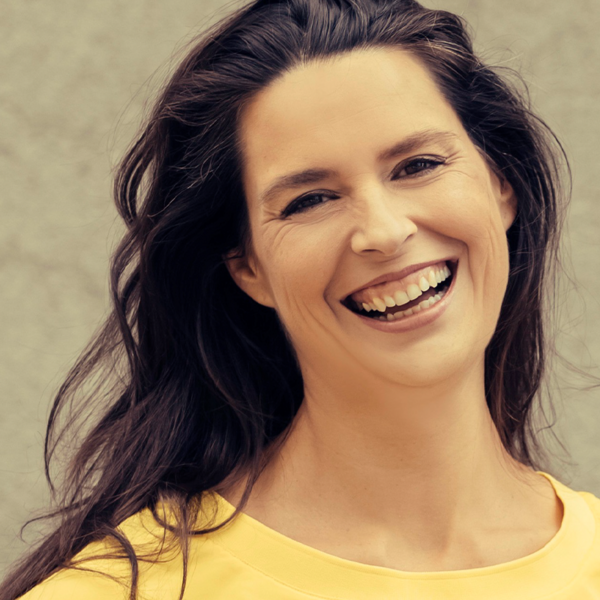Seven Keys for Trauma-sensitive Bodywork

Blog Article by Verena Hetzmannseder
The seven basic keys in the practice of any gesture
The seven keys for trauma-sensitive bodywork are: Slowness, phenomenological observation, noticing breathing, focusing positive sensations, focusing warmth, orientation in space and noticing flows and counterflows.
1. Slowness
Try to let the quality of the movement flow as slowly as possible. The hands flow from the heart outward. Try to perceive that both arms are irradiated from the heart and these rays flow outward, taking the hands with them. Observe the speed. You can also play with it consciously. Feel the differences between going a bit faster or slower.
Make the gesture with your arms in your own way. Consciously feel how the upper arms, forearms, shoulders, hands, and fingers feel in your body.
Okay, then sit down and let the slowness resonate and also feel your body there. How you feel in your heart, how it touches you. How your breath reacts. Without judging, simply perceive. That's very important!
2. Phenomenological observation
Let yourself be completely permeated by the gesture again and now observe consciously with your eyes how the hands and arms flow into the gesture. Arrive in the gesture and flow back to the heart.
Like a spectator who completely surrenders to this movement. Watch yourself doing it. Watch your hands. Breathe. Watch yourself make the gesture smaller or larger or whatever the gesture offers in terms of space.
Okay, then sit down, let the observation resonate and also feel your body there. How you feel in your heart, how it touches you. How your breath reacts. Without judging, simply perceive. That's very important!

3. Perception of breathing
Now the focus is only on breathing. Let yourself be completely permeated by the gesture and perceive your breathing.
Does breathing change? What is the breathing like on the right side movement? What is it like on the left side movement? What is it like in the gesture? What is it like in a quiet stance? There is a lot to explore here.
Now, practice the gesture for yourself only in your arms or legs and pay attention to your breathing. Very consciously.
Okay, then sit down and let the perception of your breath, your scent resonate and also feel your body there. How you feel in your heart, how it touches you. How your breath reacts. Without judging, simply perceive. That's very important!
4. Focus on positive, pleasant sensations in the body
Now the focus is only on feeling pleasant and positive sensations in your body. While you practice the gesture, you can explore various aspects in more detail:
Where are positive sensations? And what sensations are positive for you? Is it warm somewhere? Tingly? Alive? Fast? Slow? Cool? Cold? Tight? Wide?
You can also explore:
What pleasant sensations do I feel in my palms? Arms? Shoulders? What pleasant sensations do I feel in my feet? Legs? Lower abdomen?
Practice the gesture for yourself a few times and pay very close attention to the sensations.
Okay, then sit down and let the positive sensations resonate and also feel your body there. How you feel in your heart, how it touches you. How your breath reacts. Without judging, simply perceive. That's very important!

5. Focus on warmth
Now, take a step further in feeling. Now, just want to sense warmth. Like a detective who is on the lookout for warmth throughout the body!
Practice the gesture and concentrate on sensing warmth in different parts of your body. Also notice how you perceive warmth.
Okay, then sit down and let the warmth resonate. Feel your body. How you feel in your heart, how it touches you. How your breath reacts. Without judging, simply perceive.
6. Orientation in space
For trauma-sensitive bodywork, spatial orientation is very important, and it's important that you orient yourself within the space. This means that before the gesture, while you're still standing in silence, fully present with yourself, you should become aware of your surroundings. Focus your attention on the space around you.
How are you positioned in relation to the wall behind you? How are you positioned in relation to the center of the room? You can consciously turn your head to the right and left and really take in your surroundings. Try to become more aware of your surroundings without looking. This gives your nervous system the impulse to come out of freezing and into movement through orientation, because orientation provides safety.
Now, with an awareness of how you're standing upright and how your shoulders and hips are positioned horizontally in the space, practice the gesture.
Notice how the axis of your arms or legs changes in the space. By this, I mean how the arm flows through space. Or the leg. Simply observe it. This establishes a connection between you and the environment. You experience yourself in space in a safe way.
Then, sit down and let the spatial orientation resonate within you. Remember it and feel your body. How does your breath react? How does your heart respond?

7. Flow, Current, and Counter-Current
Our seventh key deals with the perception of flow. You can feel the flow with your body, and it first requires a certain imagination that there are currents and counter-currents. Delicate practice gradually brings you closer to the perception. It is also important that it is most easily achieved in a very relaxed inner state. The strong will to want to perceive it stands in the way.
Perception arises through devotion and serenity. Practice with devotion, without expectation. And at the same time, practice with serenity and allow for non-perception.
So, the idea is that a flow arises from the connection with your essence, with your heart, which moves the arms and/or legs in the gesture. You are flowing through your own being and moved by the current to which you surrender. Every current produces a counter-current, which naturally begins... roughly halfway through the movement. That's just roughly!
See how you can approach it for yourself.
It flows from the heart through the arms and/or legs, and this current moves. Try to perceive the flow.
Sit down and let the current and counter-current resonate within you. Feel inside your body and how you feel in your heart. Notice if and how it touches you, and also how your breath responds. Again, without judgment, just observe. This is very important!

Verena Hetzmannseder is a speaker at the Trauma Conference 2023.
Verena Hetzmannseder
The seven important keys
of attention-based
Movement Work
Watch her contribution in the video!


1 comment
Thank you Verena for your beautiful and healing words.
Simply reading your offering brings calming and a feeling of being held by lovely forces.
💗🕯 Alorah
Leave a comment